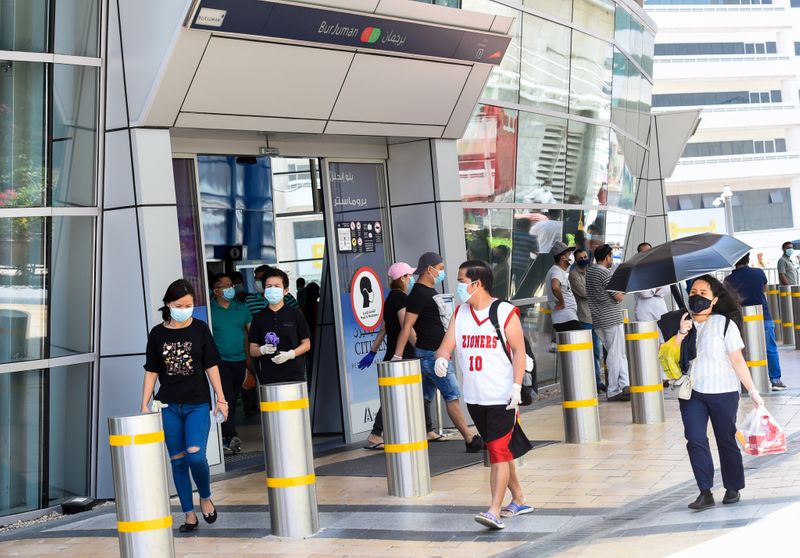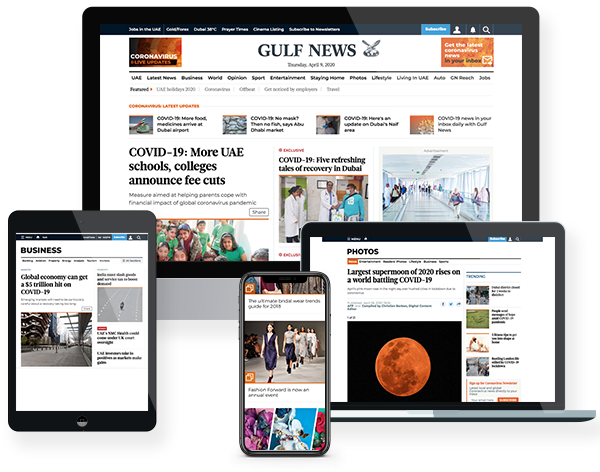
Dubai: The Dubai Metro Blue Line project, which will commence this year, will encompass 14 stations, including three interchange stations, connecting key areas of Dubai, the Dubai Roads and Transport Authority (RTA) announced on Sunday.
“The year 2024 is set to mark the commencement of the Dubai Metro Blue Line project, which will stretch over a total of 30 km, with 15.5 km running underground and 14.5 km above ground,” Mattar Al Tayer, Director General, Chairman of the Board of Executive Directors, RTA, said.
He made this statement while revealing the 2023 figures of public transport and shared mobility and taxi ridership at 702 million riders, 62 per cent of whom were Dubai Metro and public bus commuters.
Al Tayer said the Dubai Metro Blue Line project has been planned to cope with the projected demographic growth of surrounding areas to one million people as per the Dubai Urban Master Plan 2040.
“It also integrates with the Red and Green lines of the Metro, offering a direct link between Dubai International Airport and nine principal areas situated along its route. The journey time between these destinations is expected to vary from 10 to 25 minutes,” he added.
13 per cent increase in ridership
Ridership of public transport and shared mobility comprises Dubai Metro, Tram, public buses, marine transport (abra, ferry, water taxi, water bus), while shared mobility comprises e-hail, smart car rentals and bus-on-demand. Taxis, of course, are run by Dubai Taxi Company and other franchise.

The 702 million ridership figure reflects an increase of 13 per cent when compared to the ridership numbers in 2022, Al Tayer said, adding the average daily ridership of public transport, shared mobility and taxis clocked 1.92 million riders in 2023, compared to 1.7 million riders in 2022.
“These indicators stem from substantial investments and concerted efforts to promote public transport, highlighted by the launch of Dubai Metro, the world’s longest driverless metro network extending 90 km, the 11 km-long Dubai Tram, and the extension of the bus routes from 2,095 km to 3,967 km (in both directions) from 2006 to 2023. It also includes deploying a modern fleet of public buses comprising 1,400 buses compatible with the European specifications for low carbon emissions “Euro 6”, and operating an integrated marine transport network including traditional Abras, Dubai Ferry, and water taxis,” he said.
Good indicator
The official said Dubai Metro attracted the largest proportion of the public transport, shared mobility and taxi ridership in 2023, amounting to 37 per cent, compared to 36 per cent in 2022, whereas, taxis acquired 28 per cent compared to 29.5 per cent in 2022.
“It is a good indicator of people shifting to public transport modes that serve a growing number of riders. The share of public bus riders hit 25 per cent, and shared mobility riders grew from five per cent in 2022 to six per cent in 2023. Meanwhile, marine transport and Dubai Tram maintained their ridership levels, which amounted to three per cent for marine transport, and one per cent for Dubai Tram,” he noted.
December records all-time high
December 2023 recorded an all-time high monthly ridership touching 64.9 million coinciding with the UAE’s hosting of the Conference of the Parties of the UNFCCC (COP28), followed by October which saw 64.2 million riders, and November which recorded 64 million riders. Ridership rates in other months ranged from 54 to 60 million.
Public transport and shared mobility means as well as taxis made 144 million trips, with over 114 million for taxis, and 25 million for shared mobility. October was the busiest month in terms of the number of trips recording 13.3 million trips, followed by November and December with 13 million trips each, explained Al Tayer.
Busiest Metro stations so far
Figures released by the Enterprise Command and Control Centre (EC3) indicated that the number of riders using Dubai Metro’s Red and Green Lines amounted to 260 million riders in 2023, reflecting a growth of 15 per cent compared to 2022.

Burjuman and Union Stations, which are interchange stations on the Red and Green Lines, accounted for the largest share of Dubai Metro ridership in 2023. On both the Red and Green Lines, Burjuman Station served 15 million riders, whereas the Union Station served 11.9 million riders.
On the Red Line, Al Rigga Station attracted the highest number of riders reaching 11.7 million, followed by Mall of the Emirates Station with 11 million, and Burj Khalifa/Dubai Mall Station with over 10 million. On the Green Line, Sharaf DG Station ranked first in terms of riders recording 9.3 million ahead of Baniyas Station with 8.2 million followed by the Stadium Station with 6.3 million.
Transport riders
In 2023, the Dubai Tram served 8.84 million passengers, marking an 18 per cent rise from 2022. Public buses saw ridership of 173.5 million, up by 10 per cent. Marine transport means, including abras, water buses, water taxis, and the Dubai Ferry, accounted for 17.43 million passengers, showing a nine per cent increase.
Shared mobility means comprising e-hail, smart car rental, and Bus-On-Demand, carried 43.61 million passengers, reflecting a substantial 34 per cent growth. Taxis, encompassing Dubai Taxi Company and franchise companies, transported 198.44 million passengers, registering an eight per cent increase over 2022.










